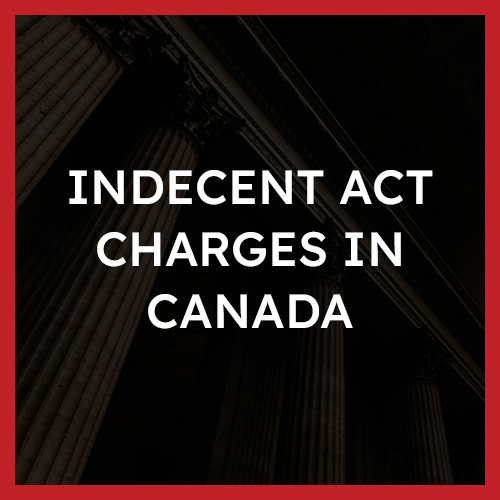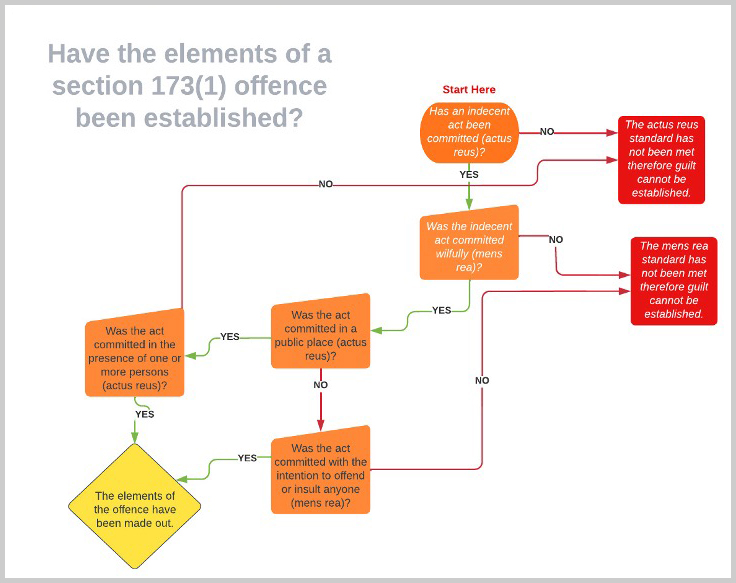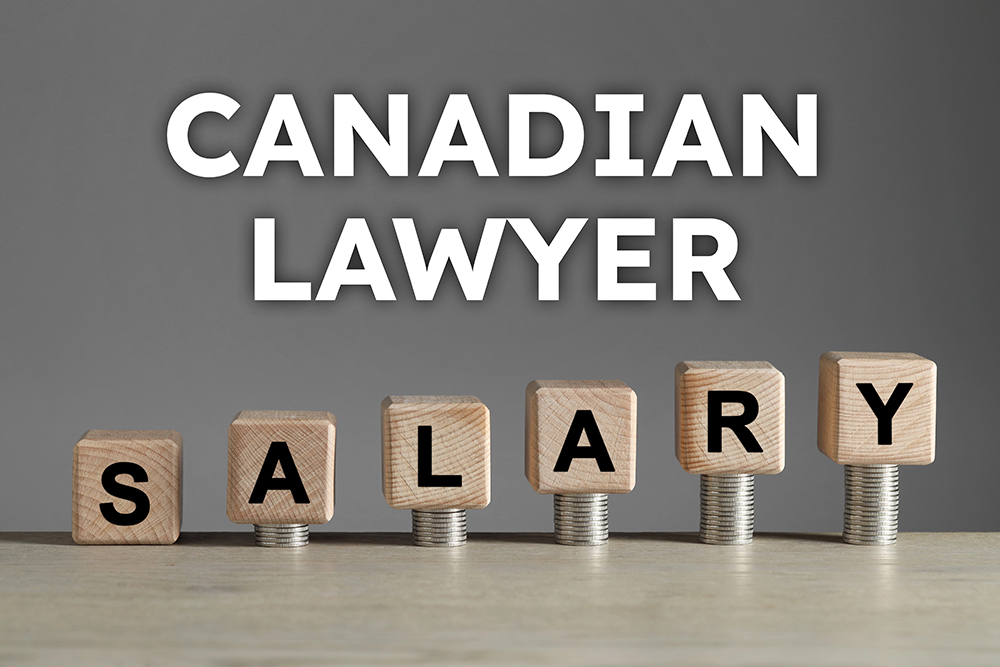Indecent Act (s. 173) Laws in Canada
What is an “Indecent Act” in Canada

Under the umbrella of indecent acts, indecent “exposure” is also criminalized. Section 173(2) of the Criminal Code outlaws “in any place, for a sexual purpose” the exposure of one’s genitals to a person who is under the age of 16. Again, this act can be prosecuted as either an indictable offence or a summary offence.
The statute leaves for interpretation the meaning of “indecent act”. Because the section does not define “indecent act”, this duty has been left to law enforcement and the courts. Generally, an indecent act involves some sort of sexual activity, masturbation, exposure of genitalia, etc. While the majority of indecent act cases revolve around some sort of sexual activity, the term “indecent act” can encompass conduct other than this.
Indecent exposure is a very serious offence and is considered a child sexual offence in Canada. It carries with it a mandatory minimum term of imprisonment.
Examples
Some common examples of committing an indecent act or indecent exposure include:
- Masturbating in public where you are seen by at least one person
- Flashing your genitals in public where you are seen by at least one person
- Having sex in a public space where you are seen by at least one person
- Engaging in some sort of sexual activity (flashing, masturbating, mooning, etc.) in a private space but with the intent to offend or insult someone else.
- Engaging in some sort of sexual activity (flashing, masturbating, mooning, having sex, etc.) in front of someone who is under the age of 16
Defences
There exists an array of potential defences to a claim of committing an indecent act or indecent exposure. The applicability of such defences will depend entirely on the facts of your case however, some defences a lawyer may consider include:
- Demonstrating a lack of mens rea or actus reus
- Intoxication
- Applicable Charter defences
These are not the only defences available to an indecent act/exposure claim. Again, specific defences may only apply in certain cases and a lawyer will analyze and apply defences that are the best fit in each individual case.
Punishment
Depending on whether you are charged with a section 173(1) offence (indecent act) or a section 173(2) offence (indecent exposure), the prospective punishments can differ. The fact that this is a hybrid offence recognizes the range of acts that may be involved.
Indecent Act (Section 173(1))
Should you be found guilty of committing an indecent act as coded under section 173(1) of the Criminal Code, you may be subject to either an indictable charge or a summary one. A section 173 offence is a hybrid offence, and the Crown can elect to proceed either way. Their election is largely dependent on the facts of the case because an indecent act can range in severity and seriousness. There is no minimum penalty for a section 173(1) offence. If charged as indictable, the maximum penalty one can incur is 2 years imprisonment.
Indecent Exposure (Section 173(2))
Should you be found guilty of committing indecent exposure as coded under section 173(2) of the Criminal Code, you may be subject to either an indictable charge or a summary one because indecent exposure is also a hybrid offence. Nevertheless, indecent exposure is considered more serious, and it carries with it (even when prosecuted summarily) a minimum penalty of imprisonment for at least 30 days. The maximum penalty on summary conviction is a term of imprisonment not exceeding 6 months. If faced with an indictable charge, the minimum penalty is at least 90 days imprisonment and the maximum penalty is not more than 2 years imprisonment (like an indecent act). The minimum penalty speaks to the seriousness of the offence.
Overview of the Offence
Sections 173(1) and 173(2) of the Canadian Criminal Code read:
Indecent acts
173 (1) Everyone who wilfully does an indecent act in a public place in the presence of one or more persons, or in any place with intent to insult or offend any person,
(a) is guilty of an indictable offence and is liable to imprisonment for a term of not more than two years; or
(b) is guilty of an offence punishable on summary conviction.
Exposure
(2) Every person who, in any place, for a sexual purpose, exposes his or her genital organs to a person who is under the age of 16 years
(a) is guilty of an indictable offence and is liable to imprisonment for a term of not more than two years and to a minimum punishment of imprisonment for a term of 90 days; or
(b) is guilty of an offence punishable on summary conviction and is liable to imprisonment for a term of not more than six months and to a minimum punishment of imprisonment for a term of 30 days.
To secure a conviction of an indecent act or indecent exposure, there are many items which the Crown must prove. These items fall under both the mens rea requirements and the actus reus standards of the offence. To make a finding of guilt, the Crown must prove that both elements have been met. When referring to the mens rea, we are referring to the requisite mental element of the offence and when we are referring to the actus reus, we are referring to the requisite act(s) of the offence.
The Guilty Act (Actus Reus)
Indecent Act (Section 173(1))
There are many facets to proving an indecent act. There are two ways the offence may be committed, by wilfully doing an indecent act:
- in a public place in the presence of one or more persons, or
- in any place, with intent to insult or offend any person
An Indecent Act
The first requirement is that an indecent act has been committed. Because “indecent act” is such a broad and vague term, the array of potential acts which could fall under this crime is extensive. The Supreme Court of Canada has engaged in notable statutory interpretation regarding this section of the Criminal Code and has endorsed the following test for demonstrating that an indecent act has been committed.
For the Crown to prove that an indecent act has been committed, according to the seminal case R v Labaye (2005, SCC 80 (CanLII), [2005] 3 SCR 728) the Crown must show that:
- By its nature, the conduct at issue causes harm or presents a significant risk of harm to individuals or society in a way that undermines or threatens to undermine a value reflected in and thus formally endorsed through the Constitution or similar fundamental laws by, for example:
a) confronting members of the public with conduct that significantly interferes with their autonomy and liberty; or
b) predisposing others to anti-social behaviour; or
c) physically or psychologically harming persons involved in the conduct, and
- The harm or risk of harm is of a degree that is incompatible with the proper functioning of society.
Public Place
Section 173(1) is a dual offence meaning that there are two ways in which the offence may be committed. One of those ways requires that the indecent act take place in public. Therefore, the Crown must prove this. In section 150 of the Criminal Code, public place is defined as “any place to which the public have access as of right or by invitation, express or implied”. While differentiating between a public and private space seems quite straightforward, the courts have grappled with this issue extensively in the context of this crime.
Some examples of public places that the courts have considered include:
- Motor vehicle (this can depend on its parking spot – see: Hutt v The Queen, 1978 CanLII 190 (SCC), [1978] 2 SCR 476)
- Parks
- Swimming pools
- Recreation centers
- Beaches
- Hiking trails
- Common areas of apartment buildings and condominiums
- Public transit
- Schools, school grounds and campuses
- Parking lots
- Movie theatres
- Concerts
- Sporting events
Conversely, the courts have also contemplated what doesn’t constitute a public space. For example, it has been established by the Supreme Court of Canada that a man masturbating at the window of his lighted living room for which his neighbours could witness was not in a public place (see: R v Clark, 2005 SCC 2 (CanLII), [2005] 1 SCR 6).
In the Presence of One or More Persons
As specified in section 173(1) of the Criminal Code, if the indecent act is wilfully (please see mens rea section below for elaboration on the concept of wilfully) committed and it occurs in a public place then it must also be in front of one or more persons.
Again, the courts have addressed what “in the presence of one or more persons” means and they have established a few important rules when making this discernment.
- Where two people participate in an indecent act, the presence of a participant in the act does not meet the requirement of “in the presence of one or more persons” (see: R v Follet, 1994 CanLII 10217 (NLCA)).
- The presence of a surveillance camera does not meet the “presence of one or more persons” requirement (see: R v Follet, 1994 CanLII 10217 (NLCA)).
- According to R v Mailhot, 1996 CanLII 6499 (QCCA), it may be a defence that the accused honestly believed the second person was a participant in the act, even though they may not have been.
- Surreptitious surveillance does not meet the ‘one or more persons present’ standard (see: R v Sloan, 1994 CanLII 1921 (ONCA).
Any Place
If the accused does not commit an indecent act in a public place, then he or she must commit it with an intent to offend or insult someone (the intent to offend or insult someone is the mental element of the offence discussed further below). The term “any place” has been considered by the courts and it has been established in R v Alicandro, 2009 ONCA 133 (CanLII) that the phrase “in any place” does not mean that the accused and the accused who exposes him or herself must be in the same physical location as the victim of the exposure. Rather, the use of “any place” was intended to make it clear that section 173(2), unlike section 173(1), is not limited to acts done in a public place or in any particular place.
Indecent Exposure (Section 173(2))
The actus reus elements of a section 173(2) offence for indecent exposure are arguably less burdensome to prove than that of a section 173(1) charge. The act can be committed in any place (see our brief discussion on this criterion here), it only must include the exposure of genitals (how they are displayed does not matter – mere exposure is sufficient for establishing the actus reus of this offence), and the genitals must have been exposed to a person who is aged 16 years or younger. The mental element “for a sexual purpose” is discussed below.
The Guilty Mind (Mens Rea)
Indecent Act (Section 173(1))
If the actus reus can be demonstrated, then the Crown must go on to prove that the mental elements of the offence exist. Both aspects of the dual offence (in public in front of one more persons; or in any place with an intent to insult or offend someone) require that the accused committed the indecent act wilfully. What constitutes wilfully changes shape based on whether the accused committed that act in public or in any place.
“Wilfully does an indecent act in a public place in the presence of one or more persons”
There has been considerable inconsistency within the courts about what constitutes “wilfulness” in a public setting. This issue has yet to be set straight by the Supreme Court of Canada. In the Supreme Court of British Columbia, the Court in a case known as R v Hemphill, 2003 BCSC 1666 (CanLII) involved an accused who masturbated in a mall parking lot. The court found that mere recklessness that he might be observed was not sufficient for a conviction. On the other hand, in the Ontario Court of Justice, in a case called R v Miceli, 1977 CanLII 2038 (ONCJ), the court found that the accused’s presence in a public place when he masturbated was sufficient to establish that he did it “wilfully”. This interpretation was adopted by the Ontario Court of Appeal in R v Sloan, 1994 CanLII 1721 (ONCA).
“Wilfully does an indecent act… in any place with an intent to insult or offend any person”
In this context, the courts have tended to lean on a presumption that the act is committed wilfully where it is in the presence of and seen by one or more persons (see: Regina v Parsons, 1962 CanLII 550 (BCSC)).
Beyond proving that the indecent act was wilful, in cases where the indecent act does not occur in public, the Crown must also prove that the offender did the indecent act with an intent to insult or offend someone. The standard for this is not necessarily onerous. There is no need to name the person or persons insulted, or who may have been intended by the accused to be insulted. It is sufficient if the evidence shows someone had passed by and had been simply a viewer whom the accused may or may not have known was there (see: Regina v Parsons, 1962 CanLII 550 (BCSC)).
Indecent Exposure (Section 173(2))
The requisite mental element for proving indecent exposure under section 173(2) is that the accused must have done so for a sexual purpose. According to the courts in R v Sears, 1990 CanLII 10938 (MBCA) a “sexual purpose” refers to the “sexual gratification” of the accused. A “sexual purpose” can be found from the “circumstances of the situation, including the nature of the touching and any words or gestures accompanying the act” (see: R v JAB, 2002 CarswellOnt 3241, [2002] OJ No 3755).
Section 173(1) Flowchart
Indecent Act Defences
The availability and strength of any defence depends entirely on the specific facts of your case. However, the following are some common defences that may be used when fighting an indecent act or exposure charge.
Lack of mens rea or actus reus
As evident from the detailed discussion above related to the mens rea and actus reus elements of an indecent act or exposure offence, there are many layers to such a charge and the Crown is required to prove all of the pertinent elements. A strong defence lawyer will analyze all of the evidence that the Crown is relying on and endeavour to identify any gaps in the evidence or failures to meet the requisite mental and physical standards of the offence. For section 173(1) offences, this might include rebutting claims that the act was committed willfully, that the act was indecent in nature, it was committed in a public place, it was committed in front of one or more persons, it was committed with the intent to offend or insult someone, etc. For section 173(2) offences, this may include rebutting claims that the accused exposed their genitalia, that the accused did so for a sexual purpose, or rebutting the claim that the witness was under the age of 16. Any of these rebuttals will require evidence to the contrary.
Intoxication
Should the factual circumstances permit (you were actually intoxicated during the commission of the offence), your defence team can bring your level of intoxication to the attention of the court. There are different levels of intoxication which can have different effects on the charges laid. The point of introducing a defence of intoxication is to rebut the mens rea element of the offence. Lower levels of intoxication such as mild intoxication may be posed as a mitigating factor at sentencing. Higher levels of intoxication such as advanced or extreme may bring the intent elements of an offence into question. A defence lawyer will consider the evidence and adduce whether they believe intoxication would be a viable defence.
Applicable Charter Defences
The Canadian Charter sets out your rights and freedoms before and after your arrest. If the police fail to abide by these rights, either deliberately or inadvertently, it could aid in your defence. If any of your Charter rights have been violated before or after your arrest, you may be able to have some or all of the evidence that the Crown is relying on to secure a conviction excluded under section 24(2) of the Charter.
Indecent Act Punishment
As mentioned above, prospective sentences can range drastically and also depend on whether you’ve committed a section 173(1) offence (indecent act) or a 173(2) offence (indecent exposure). Indecent exposure is a more serious offence and carries with it a minimum penalty. Both charges are hybrid offences meaning that the Crown will elect to proceed by way of indictment or summarily. This election depends largely on the evidence and facts of the case. The punishments for both subsections are illustrated in the chart below.
| OFFENCE | PROCEDURE | FINE | JAIL | |
| MIN | MAX | |||
| Section 173(1): Indecent Act | Summary | 0-$5000 | N/A | 2 years less a day |
| Indictable | No limit | N/A | 2 years | |
| Section 173(2): Indecent Exposure | Summary | 0-$5000 | 30 days | 6 months |
| Indictable | No limit | 90 days | 2 years |
Almost all potential dispositions are available to a sentencing judge for a section 173(1) (but not a section 173(2)) conviction. This means that any sentence or sentencing combination falling under the maximum penalties could be ordered. Some examples might include a conditional or absolute discharge, a suspended sentence, a stand-alone fine, custody, custody and probation, custody and a fine, a conditional sentence, etc. In conjunction with any of these sentences, a court may also order if it deems necessary:
- Victim Protection Order – This may include imposing bans on communication with the complainant or other witnesses or persons, and bans from attending to their residence(s) or places of work or places of worship: (see: sections 1(3)(a.1), 732.1(3)(h), 742.3(2)(a.3), 742.3(2)(f)). A court may also prohibit the offender from communicating with a victim, witness or other person during the custodial portion of the sentence: section 743.21.
- DNA Orders – If convicted of a section 173(1) offence (also known as a “secondary designated offence” [see: section 04 of the Criminal Code]), if the prosecutor applies, the court may make an order for the taking of samples from the offender for the DNA databank. The section requires the court to give reasons for its decision (see: section 487.051(3)). Offences under section 173(2) are “super-primary” designated offences (see: section 487.04) and on convicting an offender for this offence, a judge must make an order for the taking of samples from the offender for the DNA databank (see: section 487.051(1)).
- Victim Surcharge Fine – this only applies should the offence have been committed after July 20, 2019 (see: section 737 of the Criminal Code).
- Registered as a Sex Offender – This would only happen on application and the Crown must prove several criteria to the court for this order to be imposed. The term for which you might remain on the registry is dependent on whether the crime is prosecuted as an indictable one or a summary one and on the sentence handed down (see: section 011(1)(b)). ‘
- Loss of Communication/Mobility Rights (only for a section 173(2) charge) – where the victim is under age 16, a court can make an order under section 161(1) of the Criminal Code prohibiting the offender from (a) attending a public park or public swimming area where persons under the age of sixteen years are present or can reasonably be expected to be present, or a daycare centre, school ground, playground, or community centre; or (a.1) being within two kilometres, or any other distance specified in the order, of any dwelling-house where the victim identified in the order ordinarily resides or of any other place specified in the order; or (b) seeking, obtaining or continuing any employment, whether or not the employment is remunerated, or becoming or being a volunteer, in a capacity that involves a position of trust or authority towards persons under the age of sixteen years; or (c) [for offences committed after August 9, 2012] having any contact — including communicating by any means — with a person who is under the age of 16 years, unless the offender does so under the supervision of a person whom the court considers appropriate; or (d) using the Internet or other digital network, unless the offender does so in accordance with conditions set by the court. Under section 161(2), this prohibition may be for life or for any shorter duration that the court considers appropriate.
*** Note: this list of ancillary sentencing orders is not exhaustive.
Frequently Asked Questions
What is an indecent act charge?
An indecent act charge can capture three main acts. Under section 173(1) of the Criminal Code (indecent acts) you may be charged where you: (1) wilfully (see how the courts interpret the term ‘wilfully’ here) do an indecent act in a public place in front of one or more persons; or (2) you wilfully do an indecent act in any place with an intent to offend or insult any person. Section 173(2) criminalizes indecent exposure.
The third act which can be captured under section 173 involves exposing one’s genitals in any place with a sexual purpose to someone aged 16 years or younger. Each of these three avenues to committing an indecent act requires the Crown to prove a number of items (see our “Overview of the Offence” section here for that discussion). Generally, an indecent act involves some sort of sexual activity, masturbation, exposure of genitalia, etc. While the majority of indecent act cases revolve around some sort of sexual activity, the term “indecent act” can encompass conduct other than this.
Is indecent act a summary conviction?
It can be; however, an indecent act is a hybrid offence meaning that the Crown can elect to proceed with the charge as an indictable one (more serious) or a summary one (less serious). How and why the Crown elects for a certain procedure depends on the facts and evidence surrounding the case.
What is the punishment for indecent acts in Canada?
The punishment for committing an indecent act depends on two things: (1) whether you committed a section 173(1) charge (indecent act) or a section 173(2) charge (indecent exposure); and (2) whether the Crown proceeds with an indictable charge or a summary one. Being charged with a section 173(2) charge is very serious and carries with it a minimum 30-day term of imprisonment if charged summarily and a minimum 90-day term of imprisonment if charged with an indictable offence. There is no minimum sentence for a section 173(1) charge.
The minimum and maximum sentences for these crimes are illustrated in this chart:
| OFFENCE | PROCEDURE | FINE | JAIL | |
| MIN | MAX | |||
| Section 173(1): Indecent Act | Summary | 0-$5000 | N/A | 2 years less a day |
| Indictable | No limit | N/A | 2 years | |
| Section 173(2): Indecent Exposure | Summary | 0-$5000 | 30 days | 6 months |
| Indictable | No limit | 90 days | 2 years |
You can read more about what a sentence for this type of charge might look like under our “Indecent Act Punishment” heading here.
Published Decisions
R v Clark, 2005 SCC 2 (CanLII), [2005] 1 SCR 6
R v Clark is a very important decision in Canadian case law regarding an indecent act. It is a seminal case and was pivotal in deciding what in criminal law constitutes a “public place”. Clark was masturbating in the window of his living room and was spotted by his neighbours from their own home. The main issue was whether Mr. Clark ‘converted’ his home into a “public place” or whether he intended to insult or offend his neighbours. The trial court convicted Mr. Clark and the British Columbia Court of Appeal upheld his conviction. The Supreme Court of Canada overturned his conviction and acquitted him because they could not find that he had committed the act within a public place as defined by the Criminal Code, nor did Mr. Clark intend to offend or insult anyone.
You can read the full case here.
R v Wickstrom, 2016 BCCA 103 (CanLII)
The accused, age 60, was observed sitting at a slot machine in a casino and exposing himself and masturbating while females walked by. Mr. Wickstrom pled guilty to committing an indecent act in the presence of others, contrary to section 173(1) of the Criminal Code. Mr. Wickstrom had a lengthy criminal record that included 12 prior convictions for committing indecent acts. He was on a conditional sentence order at the time of the offence and a psychiatric assessment described him as a moderate to high risk for re-offending, and reluctant to participate in court-ordered treatment. The offender was sentenced to three months’ imprisonment followed by 18 months’ probation.
You can read the full case here.
R v Alicandro, 2009 ONCA 133 (CanLII)
The accused struck up a conversation with a police officer posing as a 13-year-old girl in an Internet chat room. The accused quickly moved the conversation in a sexual direction and transmitted a video of himself masturbating and ejaculating to the ‘girl’. He was convicted of communicating with a person he believed to be under the age of 14 for the purpose of facilitating the commission of the offence of exposing his genitals to a child. He was sentenced to 90 days in jail, to be served intermittently, followed by two years probation.
You can read the full case here.
About The Author








